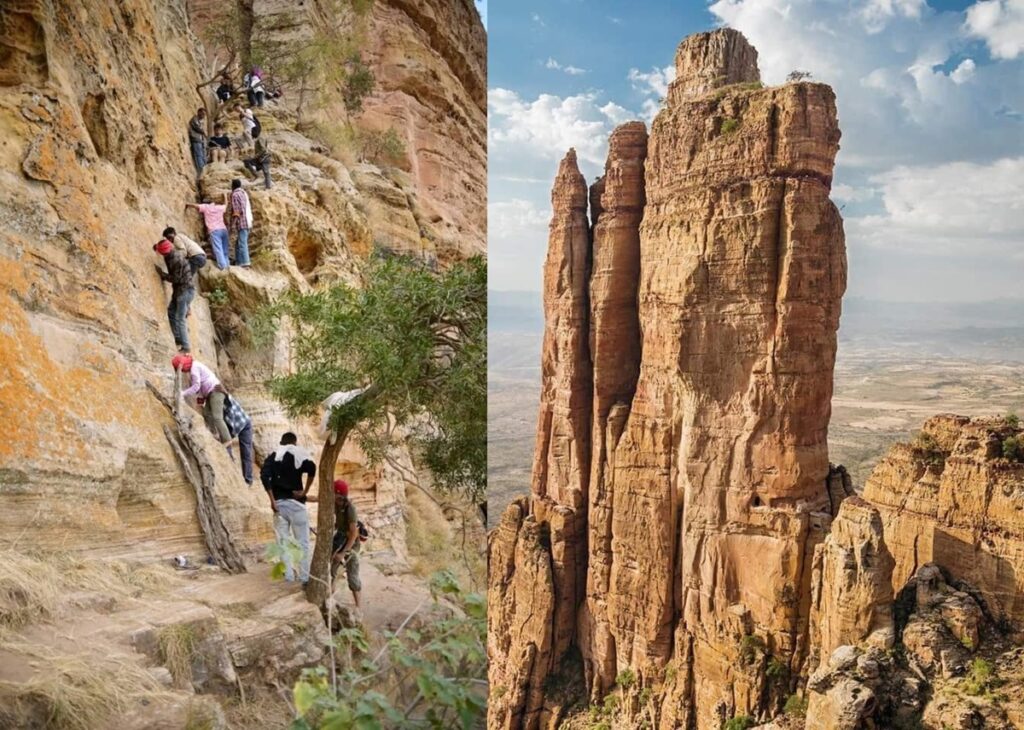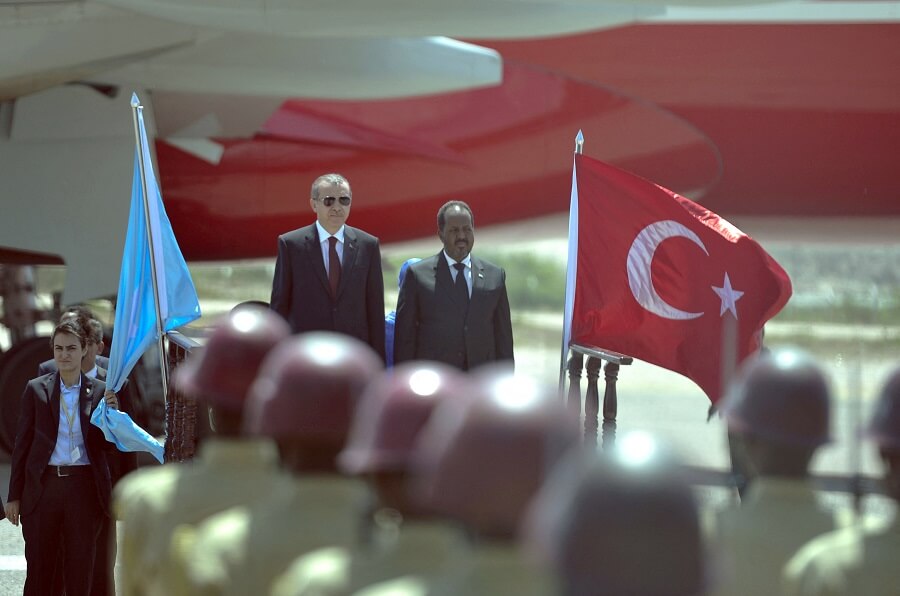
By Mihret G/kristos @MercyG_kirstos
Addis Abeba – In the heart of the once-war-ravaged Tigray region, a remarkable transformation is unfolding that has left even the most optimistic regional authorities in awe.
Just months after the echoes of the Pretoria Peace Agreement reverberated through the area in November 2022, the Tigray region has not only opened its doors to eager travelers but is experiencing a tourism revival that defies all expectations.
Locked away from visitors for nearly three years, the Tigray region has emerged from the shadows of both a global pandemic and a profound two-year war. Now, against all odds, a vibrant resurgence is sweeping through the tourism sector, painting a picture of hope and optimism on the once-turbulent canvas.
Regional tourism authorities say tourists are flocking to Tigray, either in organized groups or as intrepid solo explorers, marking an unforeseen and positive shift in the region’s fortunes.
In an interview with Addis Standard, Atsbha Gebreegziabher, head of the Tigray Tourism Bureau, expressed his astonishment at the sudden positive shift in the tourism landscape.
“We never foresaw such a phenomenon. Tourists are not only revisiting Tigray but are arriving in groups,” he disclosed. “This development surpasses our initial expectations and is unfolding within a remarkably brief period.”
Based on data obtained from the Tigray Tourism Bureau, the count of international visitors exploring various attractions within the region has now exceeded 1,000, while the influx of domestic tourists has surged to an impressive 78,000.
The number of local visitors who journeyed to Tigray specifically to partake in annual cultural festivals such as Ashenda and religious observances like the renowned Saint Mary of Axum feast, a significant celebration for followers of the Ethiopian Orthodox Church, has surpassed the two-million mark.
To facilitate the recovery of the tourism sector, the Tigray Tourism Bureau has recently initiated a program for the reopening and rebranding of tourism in collaboration with the Federal Ministry of Tourism.
The ceremony commemorating the reopening and rebranding took place in the presence of distinguished individuals, including Getachew Reda, the President of the Interim Administration of Tigray, and Sileshi Girma, the State Minister for Tourism.
According to Atsbha, the official reopening and rebranding signifies a strategic initiative designed to promote Tigray tourism and provide visitors with assurance of a secure environment in the aftermath of the two-year devastating war.
Furthermore, the reopening is positioned to function as a benchmark for planning in the upcoming fiscal year, with a specific emphasis on income generation and fostering economic recovery, as articulated by Atsbha.
Prior to commencing the official reopening and rebranding, the regional tourism bureau conducted a comprehensive survey on security matters and the psychological well-being of society. This assessment aimed to gauge the readiness of the local populace to host tourists, considering their experiences related to human rights violations, massacres, war crimes, and other traumatic events.
Recognizing the integral role of the community in tourism, traditional and cultural celebrations were organized, specifically tailored to welcome non-Tigrayans, according to Atsbha. “The outcomes revealed that individuals from diverse backgrounds could freely travel and visit, dispelling any misconceptions about travel restrictions.”
Following this, regional officials indicate that a notable increase in tourist interest was observed, with individuals both traveling solo and making group bookings. This surge in tourist activity was unexpected, given the region’s recent history of war and prevailing misconceptions.
“It is a significant milestone for us,” Astbha notes.

Haftu Welday, the owner of Mother Land Ethiopia Tours and a member of the Gheralta Tour Association, who possesses a substantial nine-year tenure in the tourism sector, attests to this upsurge in tourist activity.
“I never anticipated this positive turn of events in recent months,” Haftu remarked, expressing both optimism and a measured perspective. “Currently, we are gratified to serve two tourist groups per week, representing a noteworthy stride forward in the revitalization of our operations.”
Haftu reminisces about the years leading up to the onset of the pandemic and the war, a period characterized by prosperity and a significant influx of tourists, especially to Gheralta. This attraction was fueled by the allure of exploring approximately 30 rock-hewn churches, notably the secluded worship site known as Abuna Yemata Guh.
The term “Gheralta,” assigned to the surrounding mountains, suggests undulating terrain with numerous ascents and descents. The monolithic Abuna Yemata Guh church, believed to have been constructed during the 6th century AD, features internally painted depictions of saints directly applied to the rock surface. The pigments utilized in this intricate artwork are sourced from a collection of natural substances, including various plant extracts, animal blood, and charcoal.
Integral components of the visitor experience included activities such as tracking and homestays, with the association adeptly managing a substantial volume of visitors, averaging at least 20 groups daily. Each group, comprising 15 to 20 individuals, underscores the robust demand for their services.
“As an association, we were deeply engaged in fostering eco-tourism, with an emphasis on tracking and homestays that actively involved local communities. Regrettably, the war inflicted profound damage, causing many youths to abandon their pursuits and opt for illegal migration,” lamented Haftu.
In light of the gradual return of tourists to Tigray, a glimmer of hope has emerged. Haftu underscores the presence of persistent challenges, primarily stemming from road restrictions imposed by neighboring regional states and damages to tourist sites and infrastructure. Both factors exert a detrimental impact on the resumption of tourism activities.
The battle to recovery
In a region like Tigray, which holds one of the most substantial concentrations of religious, historical, and cultural artifacts from the ancient world, including the Temple of Yeha, the Queen of Sheba Palace, and the Obelisk of Axum, the destruction and robbery that transpired over the past three years dealt a significant blow to its formidable cultural legacy.
Historically, Tigray has succeeded in attracting a significant number of tourists. However, the arrival of the COVID-19 pandemic and the subsequent devastating war have resulted in the industry’s total exclusion from the market, leading to far-reaching consequences that impact various sectors, including small service providers and households.
Prior to the eruption of the war in the Tigray region, an estimated 90,000 visitors annually contributed to the dynamic tourism industry. It was anticipated that each tourist would typically spend four days, allocating approximately $250 per day.
This sector not only generated millions in revenue but also played a crucial role in offering employment opportunities for thousands of individuals.
But during the war, Tigray has witnessed the destruction of its cultural heritage, including landmarks like the Debre Damo Monastery and Al Nejash, perhaps the first mosque in Africa.
Incidents of robbery targeting ancient manuscripts, a lack of timely efforts in heritage preservation, the destruction of private lodges and hotels of various sizes, and the utilization of key tourism areas as military camps have further intensified the crisis.
According to reports from The Times, there has been a surge in the appearance of ancient Ethiopian artifacts for sale on various online platforms, including eBay. This has raised suspicions that these items might have been stolen from churches during the war in Tigray. Centuries-old relics, such as scrolls, manuscripts, and Bibles, are being offered on online marketplaces for only a few hundred pounds.
Compounding these challenges, the dissemination of inaccurate information about Tigray, including false narratives and international travel restrictions, has significantly undermined the sector.
Atsbha states that roughly 250 tourism investments have ceased operations as a result of the concurrent challenges posed by the pandemic and the regional war.
One of the private investments affected is Gheralta Lodge, an Italian-owned establishment situated in Hawzen, approximately 101 km from Mekelle, the capital of the Tigray region. Founded 15 years ago with an initial capital investment of seven million birr, the lodge has since undergone expansions, amounting to a cumulative investment of 150 million birr.
Following the eruption of the war, Gheralta Lodge suffered complete destruction at the hands of Eritrean troops, subsequently serving as a camp and storage facility for various armed groups, including the Ethiopian National Defense Force (ENDF).

Welday Asgedom, the lodge manager, recounts the severe impact, revealing that Gheralta Lodge formerly hosted nearly 20,000 guests annually, with 95% being international visitors. “The lodge prospered year-round, accommodating guests during both peak and off-peak seasons.”
Employing a workforce of 60 permanent employees, Gheralta Lodge has not only made direct contributions to the local community but has also acted as a catalyst for positive change in the lives of numerous youths, as noted by the manager.
Welday further elaborates, stating, “The lodge has gained renown for preserving the authentic history of Tigrayan architecture and aligning its structures with international standards.”
The manager indicates that the vision of the lodge was to establish Gheralta as the leading standard lodge in East Africa, with focused endeavors dedicated to promoting Tigray within the global tourism market.
Achieving this vision appears to be far-fetched for the management of Gheralta Lodge at present.
“Reconstructing the lodge without compensation seems insurmountable,” said Welday. “The uncertainty of a recurrence of such devastating incidents makes it virtually impossible for investors to re-enter the sector without guarantees.”
Atsbeha, the head of the tourism bureau, acknowledges the extended timeline required for comprehensive restoration, potentially spanning decades. He indicates that the feasible interim solution involves reopening with limited capacity, achieved through collaborative efforts with small and large service providers.
According to Atsbeha, dialogues with relevant authorities are underway to address the reconstruction of war-damaged tourist attractions.
Atop the tourist attraction site, vital infrastructure like the Aksum Airport, formerly a vibrant hub for tourists, suffered extensive damage.
Constructed with a significant investment exceeding 526.8 million birr, this transportation facility played a crucial role in facilitating seamless travel and extending a warm welcome to visitors. However, the devastating Tigray war, commencing in November 2020, has left the airport in ruins, marking a tragic end to its esteemed position as the primary gateway to the historic city of Axum.
Recently, the Ethiopian Airlines Group announced its intention to resume operations at Aksum Airport, extensively damaged during the Tigray war, before September 2024.
“The Aksum Airport will commence its operations before the winter,” Lemma Yadecha, the Chief Commercial Officer (CCO) of Ethiopian Airlines, stated.
Tewolde Girmai, the regional maintenance process coordinator of Ethiopian Airlines, also conveyed to state media that the airline has initiated the procurement of materials required for the airport’s restoration.
Until the maintenance work at Aksum Airport is completed, tourists planning to visit the historic city and its heritage sites by air will need to travel through Shire Airport, situated 103 kilometers away from Axum.
Nevertheless, regional authorities indicate that the current upsurge in tourist arrivals marks a promising rejuvenation for Tigray’s tourism industry, indicating an increasing confidence in the region’s safety and attractions.
Officials like Atshba are confident that the unforeseen spike in visitor numbers not only brings economic advantages but also stands as a testament to the resilience and allure of Tigray as a noteworthy destination on the global tourism map. AS







